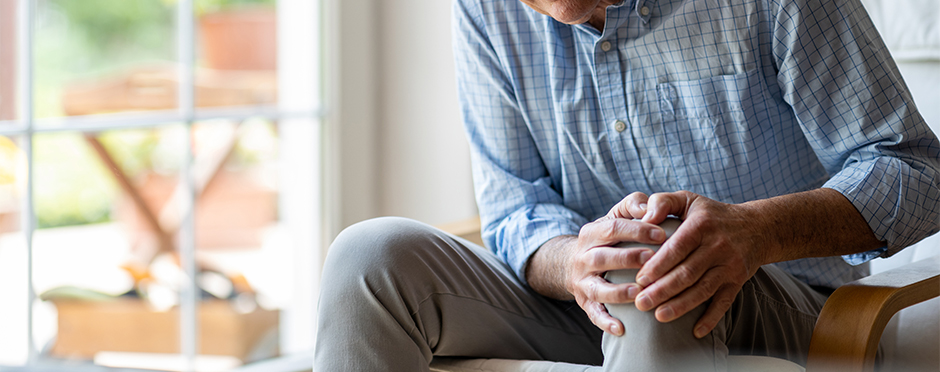
Motion Is Lotion: How To Stay Moving When Living With Osteoarthritis
Leave a CommentArthritis affects 24% of American adults, is the leading cause of work disability1, and accounts for approximately $303 billion of the $4.1 trillion yearly healthcare cost. With 21% of the population estimated to be 65+ by 2030, arthritis management will be an increasingly prevalent topic.
While exercise is one of the best treatments for arthritis, inevitably, the question arises of how to keep moving when living with arthritis. The answer begins with understanding that exercise is not the enemy.
Arthritis
A misconception surrounding osteoarthritis is that it’s the direct consequence of wear and tear. In actuality, arthritis is due to a complex interaction between various influences. The most widely held risk factors for arthritis include joint injury, age, genetics, and increased joint forces due to obesity. However, recent evidence suggests that in addition to excessive joint forces, obesity might play a larger role in arthritis.
Obesity and its subsequent metabolic dysfunction, including dislipidemia (high cholesterol), insulin resistance (diabetes), and hypertension (high blood pressure), have been associated with cellular processes that contribute to cartilage damage2. While continued understanding of these processes is still being understood, the main idea is that arthritis is more complex than “wear and tear.”
Motion is Lotion
Because wear and tear may not be the largest contributing factor to one’s arthritis, there’s no need to fear movement or activity. This information can be liberating to many arthritis patients.
In fact, a 2019 paper reviewed the effect of physical activity on those with lower leg osteoarthritis. The results indicated that physical activity decreased pain, improved function, and improved quality of life. Of equal or greater importance, the paper found no evidence that activity below 10,000 steps per day progressed or accelerated osteoarthritis3.
When it comes to staying active while living with arthritis, the first step is to remove the stigma that physical activity makes it worse. Motion is lotion, and physical activity has many benefits for arthritis patients.
With this knowledge, use these practical tips to aid you in staying active while living with arthritis.
Break Activity into Segments
That same study mentioned above indicated that the benefits of exercise on arthritis could be seen with as little as 10 min of activity. Activity can be broken into smaller segments, spread throughout the day and achieve similar results as an activity performed all at once. The goal is to achieve a cumulative 150 min of moderate to vigorous activity a week.
Variety Of Movement
When engaging in physical activity, make sure to perform a variety of movements and/or exercises. When engaging in different activities, you use different muscle patterns and stress the joints in other areas and with different intensities. This avoids arthritic flare-ups from repeated movements.
Keep Warm
Arthritis tends to be less painful and stiff when the joint and surrounding muscles are warm. Performing a proper warm-up before exercise, wearing clothing that keeps the joints warm, and performing exercises in warmer water are all excellent ways to ensure the activity is a good experience.
Timing
Many people with arthritis find that performing activities during certain times of the day can be beneficial. While not an absolute rule, avoiding early mornings, when stiffness might be more prevalent, and late evenings, when excessive fatigue might be present could allow for a better activity experience.
Resistance Training
Resistance training for improved muscle strength is vital for those with arthritis. While ‘motion is lotion’ for joints, ‘strengthening is lengthening’ the life of joints. Perform moderate resistance training 2-3x per week, including bands, body weight, hand weights, or water resistance.
Keep Active
Knowing that movement is not the enemy but often the antidote is the key to keeping active while living with arthritis. If pain is currently stopping you from daily activities and/or participating in exercise, contact your nearest Athletico for a free assessment. Free Assessments are available in-clinic or virtually through our Telehealth platform.
*Per federal guidelines, beneficiaries of plans such as Medicare, Medicaid, Tricare, VHA and other federally funded plans are not eligible for free assessments.
The Athletico blog is an educational resource written by Athletico employees. Athletico bloggers are licensed professionals who abide by the code of ethics outlined by their respective professional associations. The content published in blog posts represents the opinion of the individual author based on their expertise and experience. The content provided in this blog is for informational purposes only, and does not constitute medical advice and should not be relied on for making personal health decisions.
References:
1. “Chronic Disease Fact Sheet: Physical Inactivity.” Centers for Disease Control and Pre-vention, Centers for Disease Control and Prevention, 8 Sept. 2022, https://www.cdc.gov/chronicdisease/resources/publications/factsheets/physical-activity.htm.
2. Azzini GOM, Santos GS, Visoni SBC, et al. Metabolic syndrome and subchondral bone alterations: The rise of osteoarthritis – A review. J Clin Orthop Trauma. 2020;11(Suppl 5):S849-S855. doi:10.1016/j.jcot.2020.06.021
3. Kraus VB, Sprow K, Powell KE, et al. Effects of Physical Activity in Knee and Hip Osteoarthritis: A Systematic Umbrella Review. Med Sci Sports Exerc. 2019;51(6):1324-1339. doi:10.1249/MSS.0000000000001944
